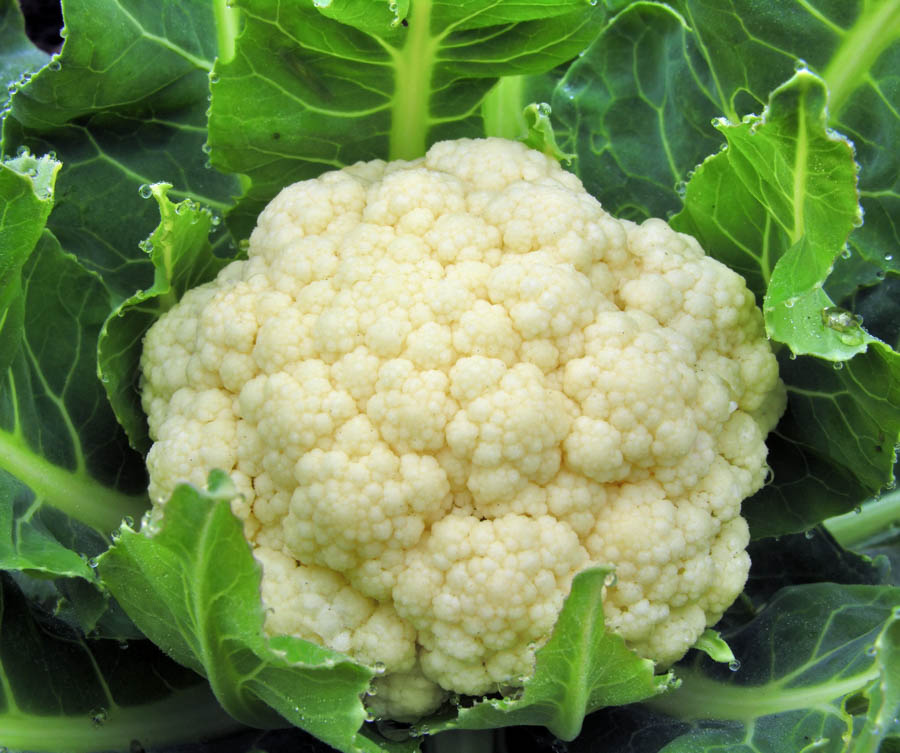Field-Blanching Cauliflower

Many varieties of white cauliflower need to be field-blanched (also just called “blanched”) to produce the best-quality curds; purple, green, orange, and self-blanching varieties generally do not require blanching. Field blanching means blocking out sunlight, as opposed to kitchen blanching, which means boiling or cooking briefly. Unblanched white cauliflower may develop undesirable yellow-to-brown color, texture, and/or stronger or unpleasant flavor.
Blanching should begin when curds are about 2 to 3 inches in diameter, at the size of about an egg to a tennis ball. Blanch cauliflower when curds are as dry as possible, preferably at least 24 to 48 hours after overhead watering or rain, to avoid trapping moisture around curds, which can encourage disease and insect infestation. Gently press each plant’s leaves over the curd. It’s better to fold leaves and surround the curd than to pull them together and tie them vertically, as the latter may admit and trap moisture. Use enough leaves to block sunlight and keep out moisture, but allow some air circulation if possible and space for the curds to grow. Sometimes leaves can be tucked securely under each other, but these tend to slip open when you aren’t watching; GardenZeus recommends tying leaves loosely with cloth strips, twine, landscape tie tape, or rubber bands to allow room for growth. Use longer strips than you need to tie young so that you will have sufficient spare length in the ties as curds grow.
Loosen ties or retie escaped leaves as needed, and unwrap the blanching curds every 1 to 3 days to watch for pests and monitor growth of curds. Avoid overhead watering after tying leaves for blanching.
Curds are generally ready for harvest 1 to 2 weeks after blanching, but in warm to hot weather, curds may be ready in 4 to 7 days. In cold weather or with slow varieties, curds may require up to 3 weeks to mature after blanching.
GardenZeus has customized growing information for cauliflower by zip code. To get started, enter your zip code here.
Other articles of interest regarding cauliflower include:
